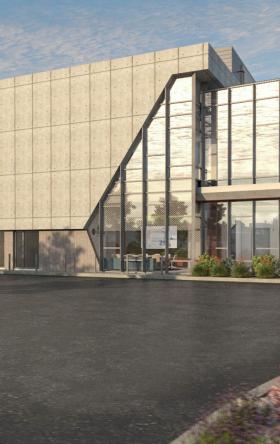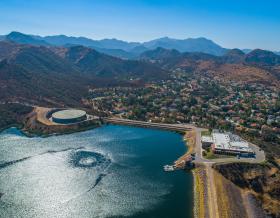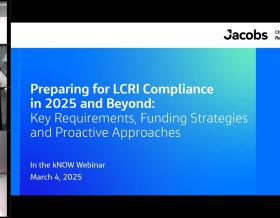A View on the Future of Transportation Planning: A Q&A with Stephen Rutherford
Global transportation planning director talks about how big data guides infrastructure decision making

Decisions made on transportation infrastructure influence the shape and success of our cities for generations, at a time of rapidly changing work and living patterns.
With high rankings across all modes of transportation as ranked by Engineering News-Record, Jacobs guides our clients’ decision making on whether to invest in hard capital infrastructure, nudge people out of their cars on to more sustainable forms of transport on the drive toward decarbonization, or devise new ways of using existing infrastructure more intensively—all while understanding the wider economic and political implications of such policies.
With close to 1,000 transport planners worldwide, we offer a full range of services, from front-end feasibility studies and policy development to full-scale strategic modeling and scheme appraisal, to the detailed analysis of projects.
We keep people and goods moving smoothly into the future with the help of talented teammates like Stephen Rutherford, our global director of transport planning. In this Q&A, we connect with Stephen to get his thoughts on the trends and technologies advancing how we plan for and deliver transportation infrastructure and solutions for tomorrow.
Tell us a bit about what a day in the life is like as Jacobs Global Director for Transport Planning, and what we offer to our clients in this area.
I've been at Jacobs for 24 years in various roles across operations and consulting. There’s never been a role more exciting than the one I’m in now—I love analyzing the trends of transport planning and deciding what innovations we need to be ahead of the game. I’m also heavily involved in project delivery; for example, I’ve been based in the Middle East for the last five years, leading the planning for some of the region’s most impactful projects, such as Etihad Rail. I’m also involved with sales and winning new work globally.
What Jacobs offers, that many of our peers don’t, is an organization that works collectively around the world, bringing the best brains, the best thoughts, the best innovation to help win and deliver projects globally. It allows us to tap into the right person to deliver planning services for our clients, no matter where they reside in the world, or internally on our organizational charts or cost structures. Our market solutions truly put our clients’ needs first… and for transportation planning, that means access to the newest techniques in demand modeling, big data and simulation applications for planning, and funding support to bring groundbreaking projects to fruition.
With technology moving faster than ever, where do you see the industry heading?
Big data keeps us evolving. With insights from data, we can truly understand travel behaviors like never before. How are people getting from Point A to Point B? If they need critical medical services, how do they get to care? How do they commute? Are all areas of a city connected, or are some areas at a disadvantage? How are trips impacting the environment?
Big data helps transportation agencies and infrastructure owners make sense of these questions and make stronger decisions – from pinpointing where to deploy electric vehicle charges to meet new demand, to identifying road safety hotspots and solutions, to diagnosing the infrastructure needed to boost equitable access.
How do you help clients think differently to respond to these data trends?
When it comes to big data, the biggest question is: How do we unlock the value of data to create and improve transportation systems for these needs that are smarter, more resilient and secure?
At Jacobs, we aren't just thinking about this. Our planners are implementing transformative solutions, like Transport for London (TfL)’s Project EDMOND, that capitalize on real-time data and sharing applications to enhance the safety, quality and efficiency of multimodal transport. To our knowledge, this was the first time such a large scale, big data project using mobile phone event data was undertaken in a complex world city like London. The step change allowed us to statistically fuse the multi-modal, anonymized mobile data with other emerging app-based data sources to develop a full pattern of trip-making across London.
We further enhanced our capabilities in this area by acquiring StreetLight Data in 2022, a pioneer of mobility analytics who uses its vast data and machine learning resources to shed light on mobility, which gives our clients a new look at solving complex transportation problems.
StreetLight applies proprietary processing technology to location data from millions of mobile devices, connected vehicles, Internet of Things (IoT) sensors and geospatial databases to measure multimodal travel patterns – and makes them available via its online SaaS (Software as a Service) solution StreetLight InSight®. Designed for smart cities and the transportation industry, the on-demand software provides industry-targeted analytic tools to support critical infrastructure planning, investment and policy decisions. We’re now expanding StreetLight’s services from its North American base to our clients globally, starting in the U.K. and the Middle East.
Speaking of crucial infrastructure investment and policies, what are the biggest opportunities ahead for transportation planning?
A big change, particularly in cities, is congestion pricing that aims to decrease congestion and air pollution by charging the traveling public for entering congested areas in major metropolitan areas. First introduced in Singapore in 1975, London implemented it in 2003, and some other northern European cities have also adopted it. There is greater realization that cities cannot build their way out of congestion, and with the increasing importance of the environment and technology improvements, I believe that there’ll soon be a surge of cities implementing congestion pricing.
Every city has different objectives for congestion pricing. For example, in New York, it's all about revenue maximization to help pay to improve the metro and build the Second Avenue subway scheme. In London, it's all about reducing congestion and improving what we call “healthy streets”. In Qatar, it’s a mix of both. New York’s scheme is currently delayed, but hopefully will progress after the election. Other cities are looking on with great interest.
This also introduces the idea of road user charging with the reduction of fuel tax rates. Talking about distance-based charging is easy, but our planners are introducing innovative ideas to charge vehicles by their impact on congestion. We have also advised London and other cities on planning, designing and implementing Low Emission Zones (LEZ) or Ultra Low mission Zones (ULEZ), which improve environmental conditions by banning or charging vehicles not meeting environmental standards. London now has the largest ULEZ in world, covering its entire urban area.
Transportation decarbonization is another cross-disciplinary area that offers a lot of opportunity. It’s not just about electric vehicles or transportation planning, but also about where you put all the electric charges and new technologies. This might mean building a rail line, but then you need to increase the catchment area of a station. Our planners are looking at new technologies for first mile/last mile, from simple things like e-scooters to complex trains on structures in the air in Dubai. These conversations are all focused on making the most out of the space available to expand.
Is there a project you’re particularly proud of?
In Abu Dhabi, we enhanced a traditional transport model by integrating massive amounts of new data to understand detailed people movement patterns. We brought in other data sources (for example, taxi and rideshare apps), people walking around and more to rebuild our client’s strategic model to be best-in-class.
We also changed the model’s functionality, expanding it from just cars or public transport to include new modes. The model is now complete and we’re testing demand management schemes like congestion pricing, parking changes and new public transport modes to give Abu Dhabi the best options on improving mobility. We also won an award for excellence from our client.
Transportation connects people to opportunity. What does transport planning mean for you?
Well, I'm a planner at heart. My father was a town planner and I decided at the age of 16 I wanted to be a transportation planner.
Transportation planning is at the center of everything we do, and I like to think that everyone is a transportation planner in their spare time because we all move around. The field is moving so fast with new technologies and data to understand behaviors. I'm passionate about making cities better places to live and better places to travel around, particularly because most of us live in cities.
And, if we do our roles well, we’re helping people to travel from A to B not just because they need to, but because they actually enjoy, and can access, true mobility.
About the interviewee

Stephen Rutherford is the Global Director of Transport Planning at Jacobs, responsible for developing and applying innovation, technical leadership of Jacobs’ close to 1,000 transportation planners and delivery of transportation planning efforts globally. He’s an internationally recognized transportation consultant, with 39 years of experience of leading complex, multi-modal projects in over 40 countries. Throughout his career Stephen has been at the forefront of developing new technologies and solutions for clients. He’s an expert in developing models to predict the impact of introducing congestion charging and low emission zones and has led studies in London, Doha, New York, Hong Kong, Bristol and Heathrow Airport. He is also passionate about the use of big data in transportation planning and has led initial ground-breaking projects in the U.K. such as the Trip Information System (TIS) for National Highways and Project EDMOND for TfL, and is now heavily involved in expanding the StreetLight platform globally.
Outside of work, he enjoys traveling and watching cricket, preferably together!












































